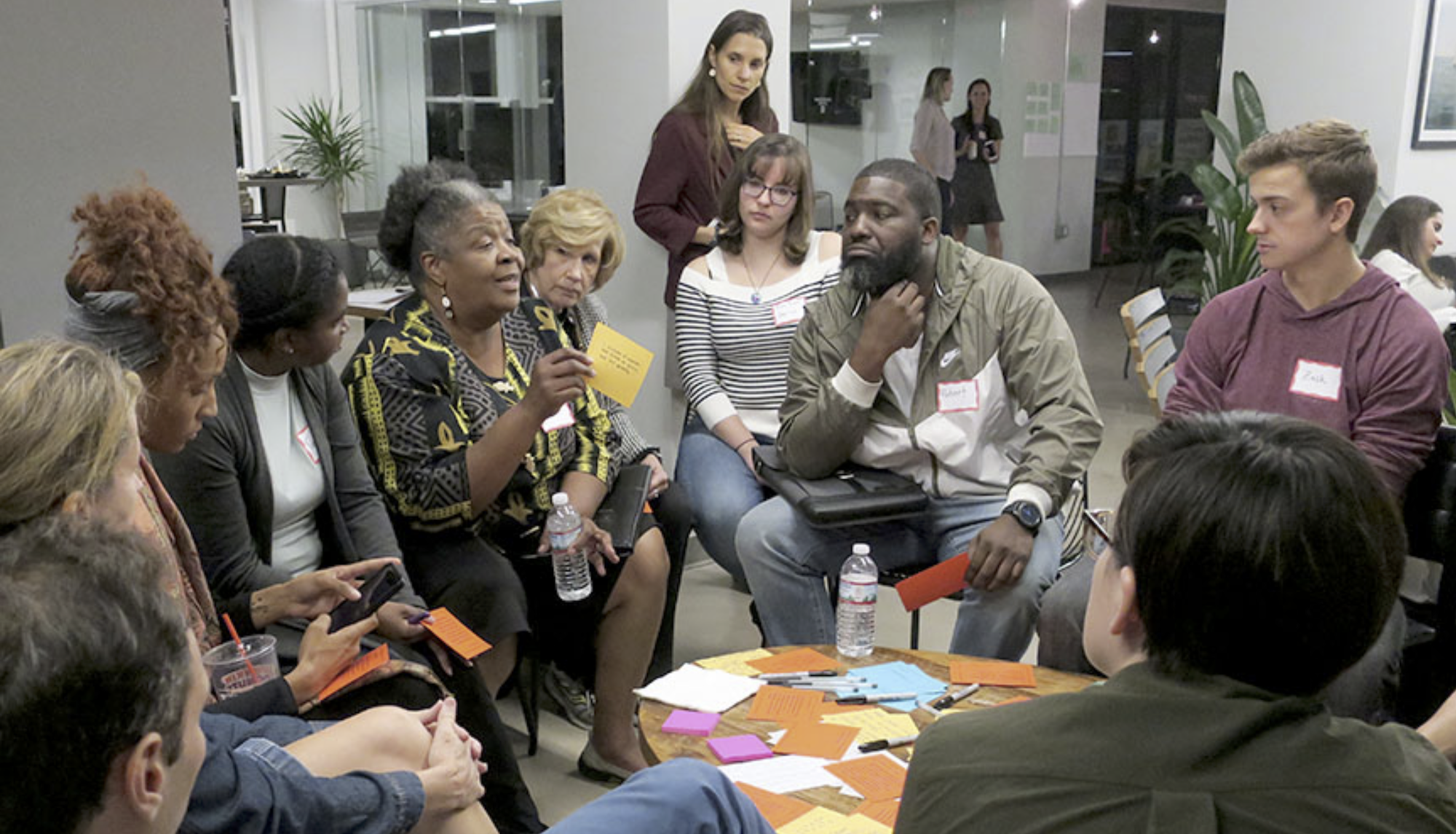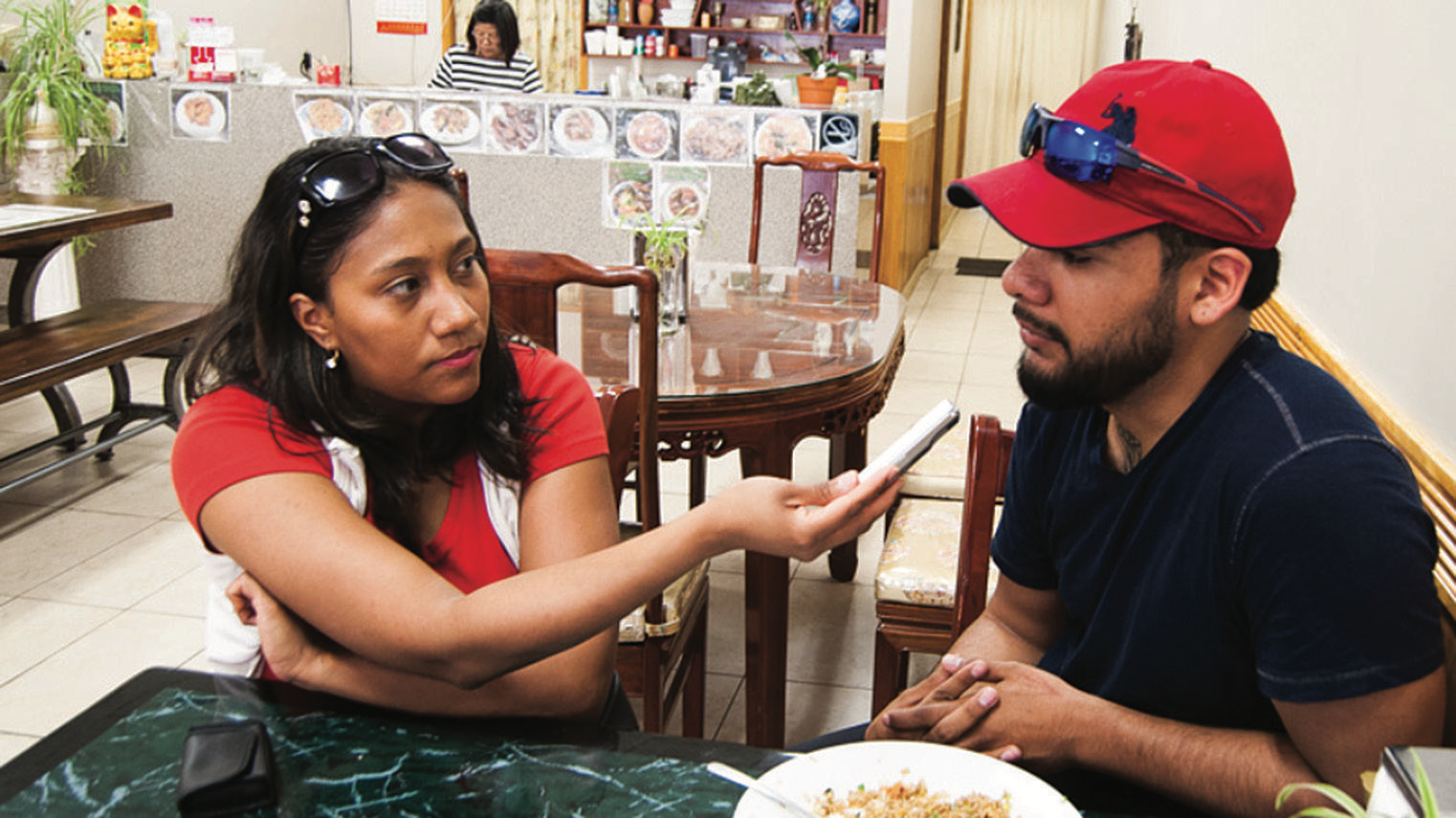Traditionally local media referred primarily to commercial print news, radio, and TV outlets that served a geographically local market. Our definition of local media includes the full collection of communication outlets, newspapers, radio stations, and hyperlocal websites, among others, that tell the stories of a specific community.
Healthy local media ecosystems are at the heart of all five elements of a well-functioning democracy. Journalists provide transparency into elections and legislative processes to ensure their fairness, in addition to elevating the viewpoints of citizens so policymakers can be responsive. When local media outlets reflect a community’s stories back to them, they help build social cohesion. Local news can empower citizens to act on the information they receive and hold elected officials accountable. “People must know before they can act,” as pioneering investigative journalist and civil rights activist Ida B. Wells wrote, “and there is no educator to compare with the press.”[i]
Here’s what funders can support to ensure local media are serving their community in ways that strengthen democracy:
- Quality Coverage: Professional, representative journalism is informed by communities’ perspectives and meets their critical information needs.
- Engagement: When reporting invites citizen’s participation by every possible means—contributing to stories, reading and sharing articles, joining public debate—those citizens are better informed and more active in their communities.
- Sustainability: News organizations need reliable revenue streams and strategies to reach their audience as news consumption habits evolve.
Below we discuss how philanthropy can increase quality coverage and engagement. Because the need for quality, engaged journalism is perpetual and resource intensive, we end with a discussion of ways nonprofits are working to ensure financial sustainability of local media.
Quality Coverage
While technology has made possible a single global market for information, people’s news and communication needs are still determined in large part by where they live. Quality coverage provided by local outlets alerts the public to new employers coming to a region, public health risks, and the performance of local schools. Access to local news enables people to learn about cultural events in their community, comply with the law, and participate in the political process.
Communities that lack access to such information are likely to be systemically disadvantaged in economic and political life.[ii] Newspaper closures have been found to lead to both declining civic participation and increased polarization.[iii] [iv] There are pronounced geographic inequalities in local media coverage. The News Measures Research Project has catalogued the stories produced by outlets in 100 randomly sampled communities in the U.S. and found 20 communities without a single local story in the course of a week.[v]
Engagement
When it comes to engagement, local news organizations have distinct advantages over national outlets. National news by default makes more general claims (for example, “unemployment is down nationwide”) that may not reflect the reality of a particular community.[vi] Since local news organizations are physically close to their audience, local journalists can meet citizens face to face, and local news organizations can partner with other community institutions to engage citizens in public discourse.
Such direct and ongoing engagement helps build trust in the news and connects people to public affairs in ways that can counteract the widespread distrust that has made audiences susceptible to fake news and misinformation. In a 2018 Poynter Institute survey, 76% of Americans indicated they have a “great deal” or a “fair amount” of trust in their local television news and 73% do so for local newspapers. By comparison, 59% of Americans have a “great deal” or a “fair amount” of trust in national papers, 55% for network news, and 47% for online news. Diverse and representative staffs are key to these engagement efforts as outlets seek to develop new audiences in communities that are underrepresented in media.[vii] Growing the audience for local media can also restore confidence in journalism more broadly.
Resolve Philadelphia is one example of how philanthropy can help. Started as a project of the Solutions Journalism Network, Resolve Philadelphia develops and advances journalism “built on equity, collaboration, and the elevation of community voices and solutions.” Its Reentry Project, a collaborative reporting project engaging 15 newsrooms and organizations, focused on the experiences of citizens returning from prison. The series informed citizens on issues of criminal justice reform, ahead of Philadelphia’s 2016 District Attorney election and won the Associated Press Media Editors’ Community Engagement award.
Sustainability
Many of the challenges local outlets face stem from a lack of a sustainable economic model. Ad revenues—which previously amounted to nearly $50 billion in the early 2000s and accounted for as much as 80% of the newspaper revenues—have fallen to less than $20 billion, migrating to targeted online advertising via Google and Facebook.[viii] As audience attention has shifted online, outlets were required to invest in new content delivery models at the same time their revenues were collapsing. By 2017, newsroom employment at newspapers had declined by 45% to under 40,000 from a high of nearly 75,000 jobs in 2006.[ix]
While Google and Facebook have eaten into newspapers’ ad revenue, news aggregators and social media platforms have made information free, weakening the incentive to pay for their information needs. Online ad revenues may cover the costs of easily accessible information like sports scores, weather reports, and movie showtimes, but investigative public interest reporting is often too expensive for cash-strapped outlets to provide. This has forced some nonprofits to find creative solutions. The Knight-Lenfest Newsroom Initiative subsidizes innovation and sharing of best practices among news organizations to generate revenue that can be reinvested in civic reporting for their communities.
American Journalism Project is an initiative to advance a more financially sustainable, mission-based local media. Its strategy is three-fold: fund existing nonprofit newsrooms through grantmaking, provide intensive support to develop grantees’ revenue-generating capacity, and build a movement of support for mission-based nonprofit news organizations with sufficient resources to cover local issues that communities depend on.
Reinvigorating Local Media: Nonprofits Making an Impact
Notes
[i] Ida B. Wells. “Southern Horrors: Lynch Law in All its Phases.” 1892.
[ii] Lewis Friedland, Philip Napoli, Katherine Ognyanova, Carola Weil, Ernest J. Wilson III. “Review of the Literature Regarding Critical Information Needs of the American Public.” 2012. https://transition.fcc.gov/bureaus/ocbo/Final_Literature_Review.pdf
[iii] Lee Shaker. “Dead Newspapers and Citizens’ Civic Engagement.” 2014. https://pdxscholar.library.pdx.edu/comm_fac/17/
[iv] Joshua Darr, Matthew Hitt, and Joanna Dunaway. “Newspaper Closures Polarize Voting Behavior.” 2018. https://academic.oup.com/joc/article/68/6/1007/5160090
[v] Philip Napoli, Matthew Weber, Katie McCullough, and Qun Wang. “Assessing Local Media.” 2018. https://dewitt.sanford.duke.edu/wp-content/uploads/2018/08/Assessing-Local-Journalism_100-Communities.pdf
[vi] Emily Todd VanDerWerff. “The rise of the American news desert.” Vox. Retrieved from https://www.vox.com/culture/2018/5/9/13771462/news-deserts-explained
[vii] Andrea Wenzel. “Curious Communities: Online engagement meets old-school face-to-face outreach.” 2017. https://www.cjr.org/tow_center_reports/curious-communities-online-engagement-meets-old-school-face-to-face-outreach.php#engagement
[viii] Pew Research Center. “Newspapers Fact Sheet. 2018. http://www.journalism.org/fact-sheet/newspapers/
[ix] Elizabeth Grieco. “Newsroom employment dropped nearly a quarter in less than 10 years, with greatest decline at newspapers.” 2018. Pew Research Center. https://www.pewresearch.org/fact-tank/2018/07/30/newsroom-employment-dropped-nearly-a-quarter-in-less-than-10-years-with-greatest-decline-at-newspapers/




